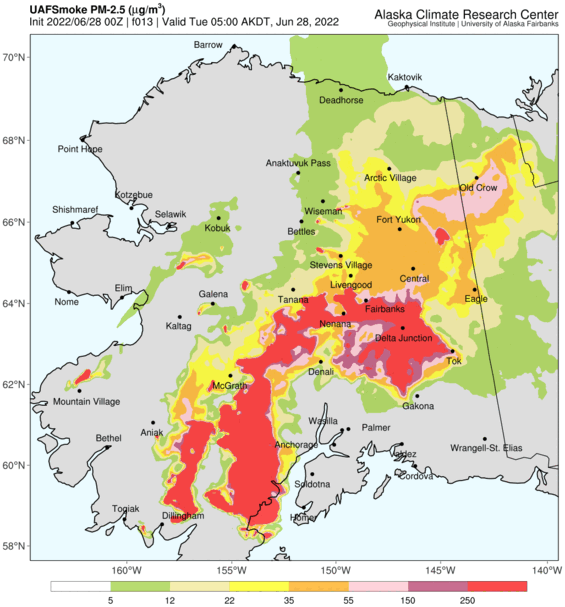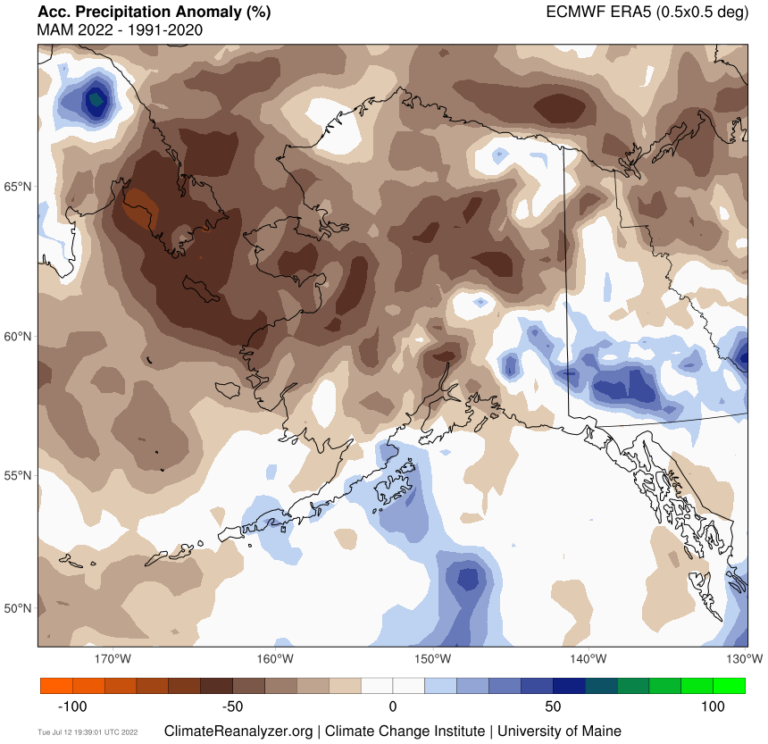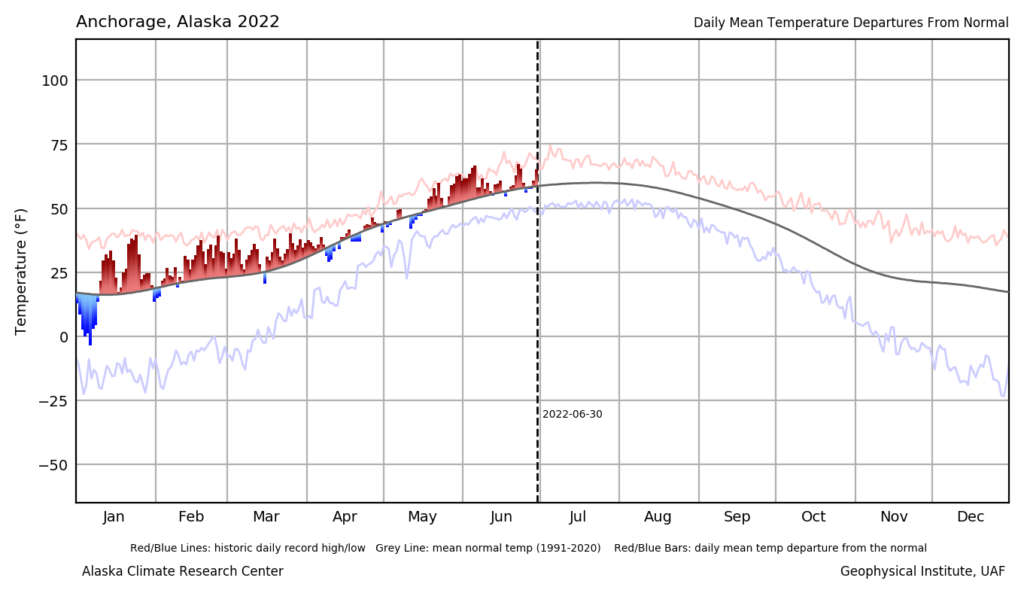
Alaska wildfires are spreading at a rapid pace. There have been 365 fires confirmed by the end of June 2022 (ref.: Alaska Interagency Coordination Center Wildland Fire Dashboard). Almost 1.8 Mio acres have burned, which exceeds the end-of-June acreage of any record fire year (i.e. 2004, 2005) to date since observational data exist.
Abnormally dry conditions coupled with periods of windy weather persist across southwest and southcentral Alaska since April and across the Interior since March. Anchorage had its second warmest June on record, with monthly mean temperatures falling just below the record set in 2019.
Spring (March-April-May) precipitation departure from normal (in percent) derived from the fifth generation ECMWF atmospheric reanalysis (ERA5). Source: Climate Reanalyzer.
Widespread smoke at regionally extremely unhealthy concentrations has been prevalent in recent days across the Interior, Southcentral, and the Southwest region. High surface pressure and low surface winds resulted in dense smoke in the Middle Tanana Valley on June 28, reducing visibility to below 1 mile at times.
For the Interior, conditions going into the 4th of July holiday weekend are expected to remain warm and dry, with high temperatures in the low to mid-80s. New fires due to lightning have to be expected due to afternoon thunderstorms. Also Southcentral Alaska will remain dry, although shift in the winds from the southwest to the southeast should help to clear the wildfire smoke. A front moving in from the Bering Sea Thursday evening will bring rain to the Bristol Bay coast and the Kuskokwim Delta through Friday July 1st, but rain is so far not expected to reach many of the large wildfire complexes farther inland.

UAFSmoke particulate matter (smoke particles 2.5 micrometers or less in diameter) forecast from June 28, 2022.
For current wildfire status information and 72-hour forecasts of black carbon and particulate matter concentrations, please check out the UAFSmoke website.




